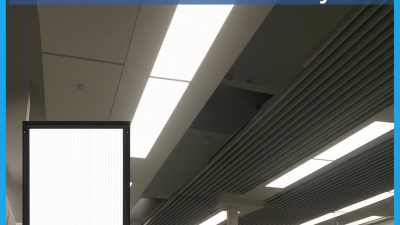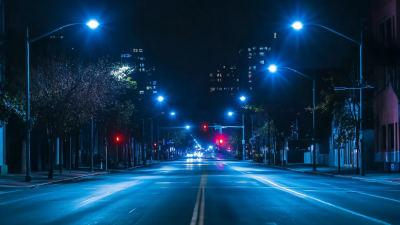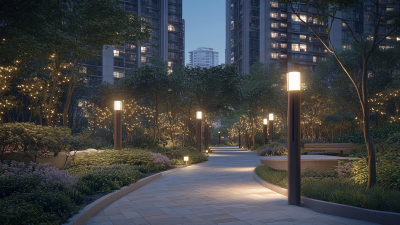Understanding the Types of LED Panel Lights: A Comprehensive Guide
In recent years, LED panel lights have garnered significant attention as a versatile and energy-efficient lighting solution for various spaces, from homes and offices to commercial establishments. With their sleek design and ability to provide uniform illumination, these lights have revolutionized the way we think about indoor lighting.
 However, with the increasing popularity of LED panel lights, it becomes crucial for consumers and professionals alike to understand the different types available in the market. This comprehensive guide aims to shed light on the various categories of LED panel lights, exploring their unique features, benefits, and applications.
Whether you're looking to upgrade your current lighting setup or simply curious about these modern fixtures, this guide will equip you with the knowledge needed to make informed decisions regarding LED panel lights that best suit your needs.
However, with the increasing popularity of LED panel lights, it becomes crucial for consumers and professionals alike to understand the different types available in the market. This comprehensive guide aims to shed light on the various categories of LED panel lights, exploring their unique features, benefits, and applications.
Whether you're looking to upgrade your current lighting setup or simply curious about these modern fixtures, this guide will equip you with the knowledge needed to make informed decisions regarding LED panel lights that best suit your needs.
Introduction to LED Panel Lights: What You Need to Know
 LED panel lights have become an essential component in modern lighting solutions, delivering energy efficiency and optimal performance. These innovative lights utilize light-emitting diodes to produce bright illumination while consuming significantly less power compared to traditional lighting options. According to industry studies, LED technology reduces energy consumption by up to 80%, making it a sustainable choice for both residential and commercial applications.
LED panel lights have become an essential component in modern lighting solutions, delivering energy efficiency and optimal performance. These innovative lights utilize light-emitting diodes to produce bright illumination while consuming significantly less power compared to traditional lighting options. According to industry studies, LED technology reduces energy consumption by up to 80%, making it a sustainable choice for both residential and commercial applications.
The versatility of LED panel lights extends beyond energy savings; they offer a variety of designs suited for different environments. From ultra-slim panels ideal for low ceilings to robust versions designed for outdoor settings, the range caters to diverse consumer needs. Reports indicate that the global LED panel market is expected to reach $20 billion by 2025, highlighting the growing demand driven by advancements in technology and a shift toward greener alternatives.
Recent innovations emphasize the integration of LED lighting in various settings, from enhancing the ambiance in cinema experiences to transforming sports venue advertising. As industries increasingly recognize the capabilities of LED panel lights, the potential for creative applications expands, paving the way for smarter, visually appealing, and eco-friendly solutions in everyday life.
Exploring Different Types of LED Panel Lights: Features and Benefits
LED panel lights have revolutionized the lighting industry by offering diverse options that cater to various needs and environments. From traditional square panels to innovative designs, each type comes with its own set of features and benefits. For instance, edge-lit LED panels are designed for a sleek and minimalistic look, making them suitable for modern office spaces. In contrast, back-lit panels provide higher luminosity, ideal for areas requiring bright, uniform lighting.
Recent advancements in LED technology have expanded their applications beyond conventional uses. The emergence of translucent LED displays has introduced new possibilities in advertising and décor, merging aesthetics with functionality. Moreover, high color-rendering LEDs are setting new standards for lighting quality, which is particularly important in commercial settings where accurate color representation is crucial. The continuing evolution within the LED panel market highlights the importance of understanding the various types available, allowing consumers to make informed decisions that address their specific lighting needs.
Comparative Analysis: Slim vs. Recessed LED Panel Lights
When it comes to choosing LED panel lights for your space, understanding the differences between slim and recessed options is crucial. Slim LED panel lights are designed to be ultra-thin, offering a sleek and modern appearance while being easy to install. They are perfect for spaces with limited ceiling height, as they can be flush-mounted directly onto the surface without requiring a housing space. This versatility makes them an ideal choice for commercial environments like offices and retail stores where aesthetics and functionality are paramount.
On the other hand, recessed LED panel lights are installed within the ceiling, creating a clean and unobtrusive look. These lights are embedded into the ceiling joists, allowing them to blend seamlessly with the surrounding architecture. Recessed panels deliver even illumination and can significantly enhance the overall ambiance of a room. They are particularly popular in residential settings, foyers, and conference rooms, where a more sophisticated lighting solution is desired. Ultimately, the choice between slim and recessed LED panel lights depends on your specific aesthetic preferences and installation requirements.
Understanding the Types of LED Panel Lights: A Comprehensive Guide - Comparative Analysis: Slim vs. Recessed LED Panel Lights
| Feature | Slim LED Panel Lights | Recessed LED Panel Lights |
|---|---|---|
| Installation Type | Surface mounted | Recessed into the ceiling |
| Thickness | Typically less than 1 inch | Usually around 1-4 inches |
| Design Flexibility | Limited to flat designs | Variety of shapes and sizes |
| Light Distribution | Uniform light spread | Directional lighting |
| Installation Process | Easier installation | More complex due to ceiling modification |
| Cost | Generally lower | Generally higher |
| Suitability | Ideal for low ceilings | Best for high ceilings and modern aesthetics |
Key Considerations When Choosing LED Panel Lights for Your Space
When selecting LED panel lights for your space, several key considerations can significantly impact both functionality and aesthetics. One important factor is the color temperature, which ranges from warm white (2700K) to cool white (6500K). According to the American Society of Interior Designers, a cooler color temperature promotes alertness and productivity, making it ideal for office settings, while warmer tones create a cozy atmosphere for residential areas.

Another critical aspect is the lumen output, which measures the brightness of the light. A report by the U.S. Department of Energy indicates that choosing the right lumen level is essential; for example, a minimum of 3000 lumens is recommended for kitchens, while living rooms typically require around 1500 lumens for effective ambient lighting.
Tips: Make sure to consider the layout of your space and choose fixtures that maximize light distribution. Also, it’s beneficial to look for energy-efficient models with a high Color Rendering Index (CRI) above 80, as they provide more accurate color representation and contribute to a better visual experience. Additionally, integrating dimmable options can enhance versatility, allowing you to adjust the lighting according to different tasks and moods.
The Future of LED Panel Lighting: Trends and Innovations
As the demand for energy-efficient and versatile lighting solutions continues to rise,
LED panel lights are evolving rapidly. The future of LED panel lighting is marked by significant trends and innovations that promise to enhance both
functionality and aesthetics in various environments. One notable trend is the increasing integration of smart technology,
allowing users to control their lighting through apps and voice-activated systems. This level of connectivity not only improves convenience
but also facilitates energy management, helping consumers save on electricity bills while reducing their carbon footprint.
In addition to smart technology, adaptive designs are gaining traction in the market. Manufacturers are focusing on creating LED panels that can change color temperature and brightness according to the time of day or specific tasks. This adaptability not only enhances visual comfort but also supports the latest research on Circadian Lighting,
which aims to align artificial lighting with our natural biological rhythms. As innovation continues to fuel the development of LED panel lights, we can expect to see even more
advancements that cater to sustainable practices and user-centric designs, paving the way for a brighter and more efficient future in lighting solutions.
Related Posts
-

10 Reasons Why Best Led Panel Light is the Ultimate Choice for Global Buyers
-

Discover the Future of Urban Lighting at the 137th Canton Fair: Commercial LED Street Lights in Focus
-

Creative Ways to Use Strip Lights in Your Home Decor
-

Unique Strip Lights Examples That Transform Your Space Instantly
-

Exploring the Future: Top 2025 Technology Trends in the Best LED Street Lights Industry
-

Innovative Flood Lights Transforming Outdoor Spaces with Enhanced Safety and Efficiency

